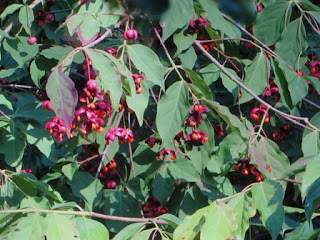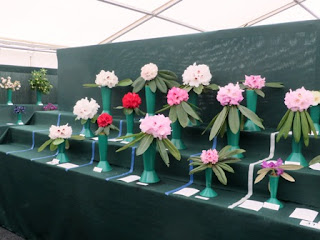 |
| Disanthus cercidifolius |
 |
| Acer micranthum |
 |
| Hydrangea paniculata and Hydrangea macrophylla |
EARLY OCTOBER
Early October brings the vivid crimsons of
Disanthus cercidifolius a member of the Witch Hazel family, Hamamelidaceae. A native of Japan, it prefers damp well drained soil and is happier in shade.
Acer macranthum, a snake bark maple and another native of Japan with spectacular autumn colour, one of the best. Here is it covered in its pretty pink seed or keys.
The hydrangeas are putting on a good display at the moment. The paniculatas are all slowly
turning a delightful pink contrasting well with the macrophyllas.
 |
| Darmera peltata |
It flowers in the spring, clusters of pale pink, on long stems before it comes into leaf. The large leaves fill the ghylls in summer and turn red in autumn. It has thick rhizomatus roots which help to stabilize the banks of the ghylls. It is a native of the Western US and a good substitute for gunnera in smaller gardens.















































